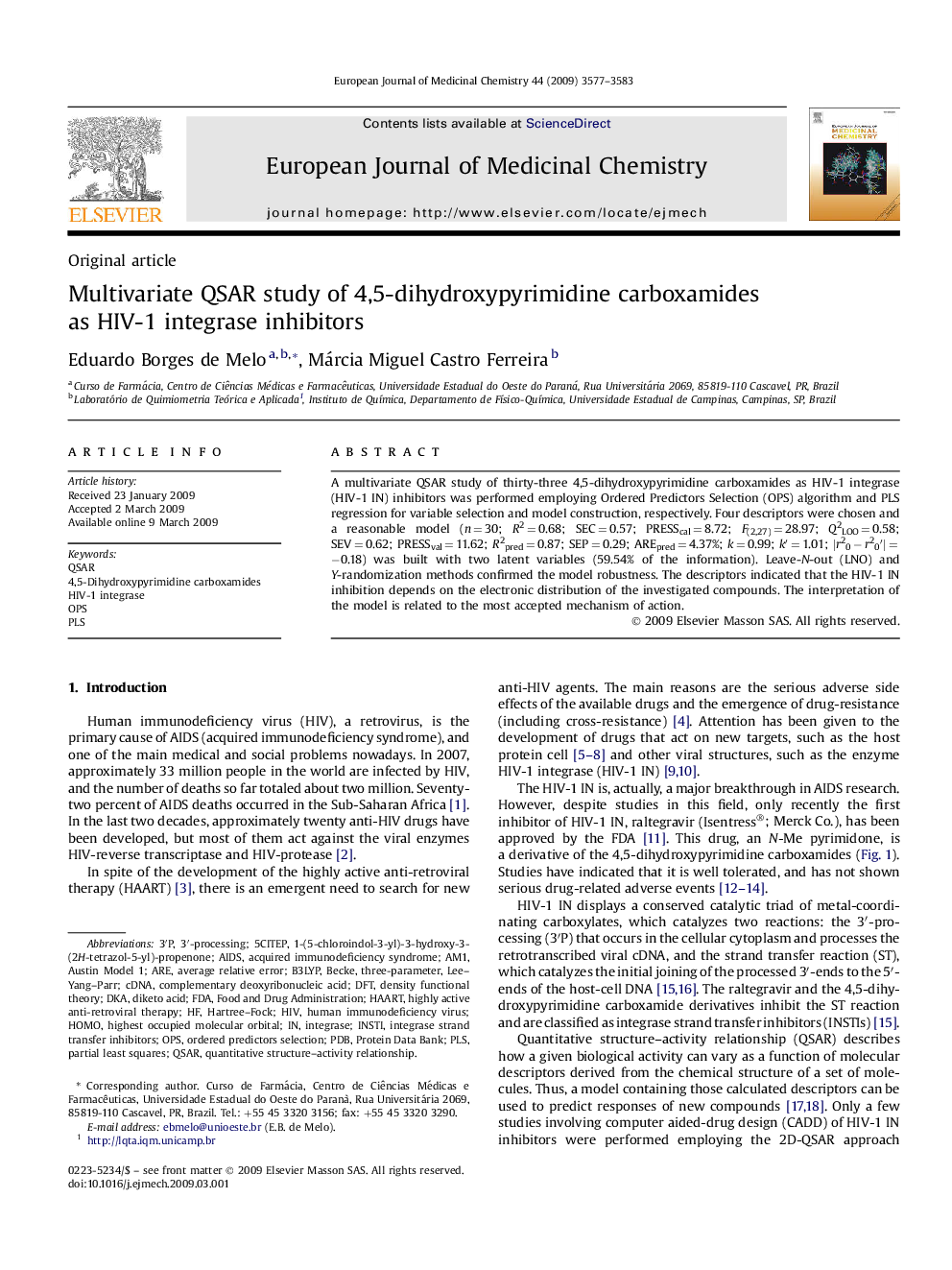| Article ID | Journal | Published Year | Pages | File Type |
|---|---|---|---|---|
| 1396704 | European Journal of Medicinal Chemistry | 2009 | 7 Pages |
A multivariate QSAR study of thirty-three 4,5-dihydroxypyrimidine carboxamides as HIV-1 integrase (HIV-1 IN) inhibitors was performed employing Ordered Predictors Selection (OPS) algorithm and PLS regression for variable selection and model construction, respectively. Four descriptors were chosen and a reasonable model (n = 30; R2 = 0.68; SEC = 0.57; PRESScal = 8.72; F(2,27) = 28.97; Q2LOO = 0.58; SEV = 0.62; PRESSval = 11.62; R2pred = 0.87; SEP = 0.29; AREpred = 4.37%; k = 0.99; k′ = 1.01; |r20 − r20′| = −0.18) was built with two latent variables (59.54% of the information). Leave-N-out (LNO) and Y-randomization methods confirmed the model robustness. The descriptors indicated that the HIV-1 IN inhibition depends on the electronic distribution of the investigated compounds. The interpretation of the model is related to the most accepted mechanism of action.
Graphical abstractA multivariate quantitative structure–activity relationship (QSAR) study was developed for a series of 4,5-dihydroxypyrimidine carboxamides that present inhibition of strand transfer reaction catalyzed by HIV-1 integrase.Figure optionsDownload full-size imageDownload as PowerPoint slide
